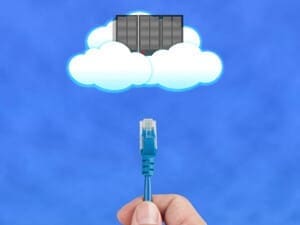In September of 2012, Microsoft announced that they were discontinuing Forefront Protection for Exchange in favor of a cloud based solution (Exchange Online Protection), definition updates would continue into 2015.This is pretty much in line with their cloud strategy where Microsoft is trying to leverage its Office 365 infrastructure to provide cloud-based spam filtering as a service for clients who currently use Microsoft for Exchange on-premise.
The signal is clear:
Yeah, we get it.
There’s another strong signal though:
“We can unilaterally terminate a product line that people were perfectly happy using in favor of a new solution”.
This is similar to what Google did with postini which was integrated into the Google Apps offering.
Basically, the two giants want to get all Email under their umbrella.
That means that people who were perfectly fine using their solutions are now orphaned, or they have to accept the new offerings, which can imply moving their Email infrastructure to the two giants.
For some companies, this makes sense. Not having to worry about servers and uptime is often a godsend for some admins.
On the other hand, it does mean you lose a little bit more control and you have to place a lot of trust in the two industry giants, knowing that they won’t turn around a few years down the road and totally change their business model yet again. Furthermore you have to trust that the level of support you will get from these companies will be sufficient for you when things do go wrong.
This being said there are still a lot of good reasons to stay with on-premise mail servers and security devices, or use other third-party filtering technologies. Here are a few good reasons:
- Control: Most on-premise solutions will provide you with finer-grained control over your mail and mail flow.
- Confidentiality: Once the mail hits your border router, it stays on your network.
- Troubleshooting: It’s usually easier to troubleshoot mail issues if the mail is hitting your own infrastructure.
- Costs: Initial cost is usually higher when staying on-premise, but it tends to taper and drop off compared to cloud solutions over time.
- Immediacy: If there’s a problem, it’s usually faster to turn around and fix issues than having to play phone tag with an anonymous person. It’s easier for you to do workarounds.
- Business: What happens if the cloud service you’re using decided to change direction or gets out of the business? You will be back to square one.
- Diversity: It’s better to use diverse solutions (i.e.: maintaining diversity in an “ecological” sense increases survivability) for security then depend on a single technology that does everything for you. In terms of vulnerabilities, if you grow dependent on ONE solution for everything, it stands to reason that the probability that a security breach will happen increases.
- Support: You will get much better support most of the time with smaller third party offerings.
- Philosophy: Oligopolies have never been very good for consumers why feed one?
There are quite a few arguments to stay on-premise or use hybrid cloud solutions instead of moving everything to a single “big-name” cloud service provider. If you do want to go to the cloud for your Email and Email Security, you should consider picking third-parties instead of going with the big established players.
EOL for FPE: http://blogs.technet.com/b/server-cloud/archive/2012/09/12/important-changes-to-forefront-product-roadmaps.aspx



